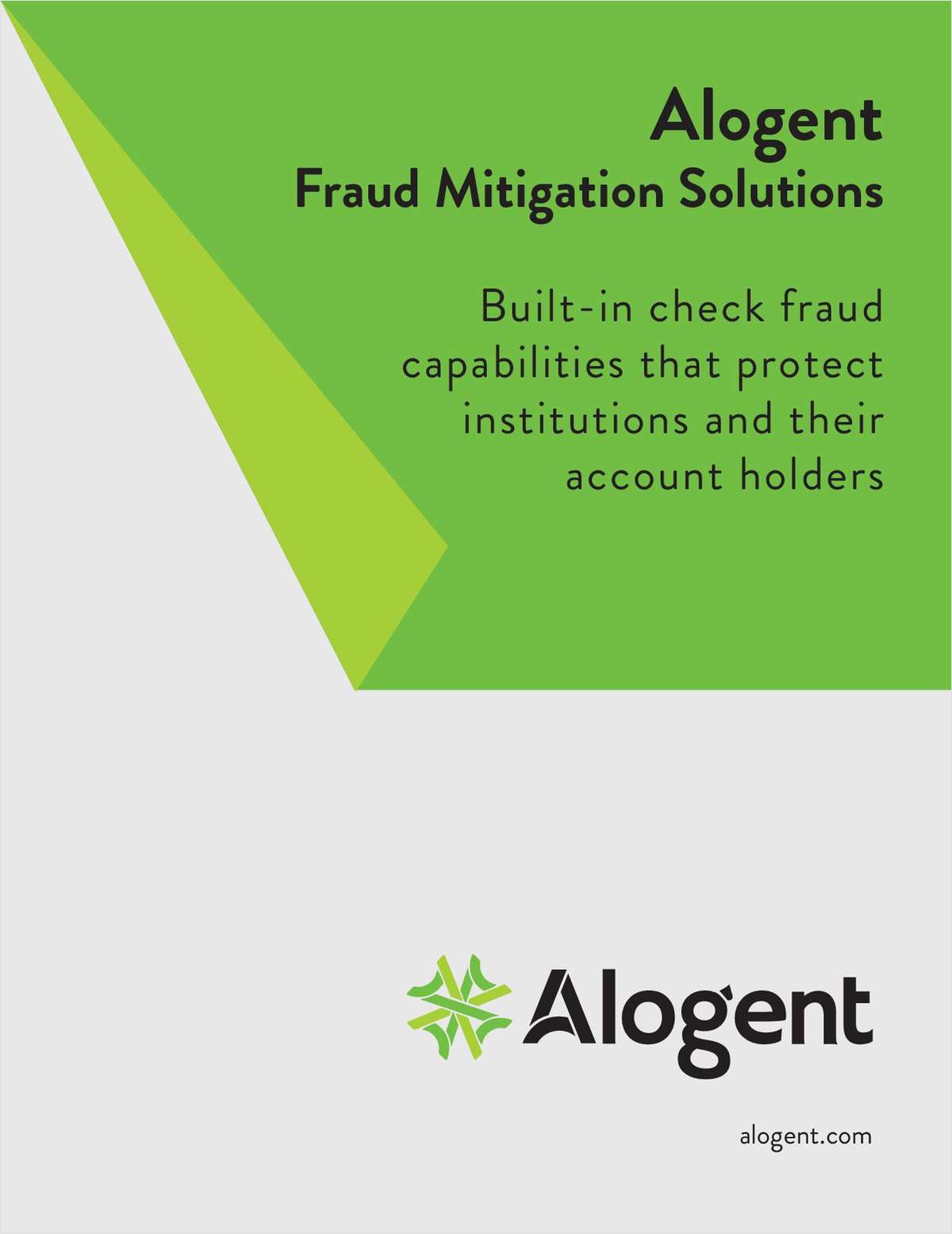VIRGINIA BEACH, Va. – Chartway Federal Credit Union has plunged boldly into areas often already packed with competition – and the effort seems to be working very well, thank you. Shortly after Chartway opened a branch in St. Petersburg, Fla., a curious St. Petersburg Times business columnist decided to pass some time while driving along Fourth Street N. by counting financial institutions. He discovered the area, known as banker's row, is already home to 16 bank and credit union offices including CFCU. Four more are about to open. In addition to Florida, other expansion beyond Virginia has taken CFCU into Rhode Island, North Carolina, Georgia, Texas, New Jersey and Ohio. President/CEO Ronald Burniske indicates California is the next target. As far as he's concerned, it's a question of diversifying in order to remain viable. He says the credit union learned that lesson years ago. Back in high school, Burniske's classmates might not have pegged him as someone likely to become a financial services executive pondering such issues. He played hockey in high school, and was drafted into the pro ranks. But he broke both wrists, ending that career. After earning a degree in accounting from Massachusetts University in North Adams – he also has an MBA from Duke – he worked for three banks. In a sense, Burniske can credit his brother for his credit union career. The brother, who filled a management position with a bank for 20 years, found himself out of a job when the bank merged and his position was eliminated. He learned his job was gone when his boss abruptly delivered the news on a Friday afternoon. Burniske quickly decided the banking industry didn't care about its employees. He started looking around. He signed on with GE Credit Union as a controller, later rising to vp/finance, and discovered it was exactly what he wanted. Credit unions cared about people. Then, 21 years ago, his wife saw a Wall Street Journal ad for a job at CFCU as EVP/CFO. They were each facing long commutes to work, and after an especially severe Massachusetts winter a milder climate had its appeal. They figured it might be a two-year stay. However, they settled in as Burniske discovered the credit union was exactly what he wanted. In 1986 he was offered the CEO job. At that time the credit union boasted $100 million in assets and three branches, all in Virginia. “About 15 years ago we were still a single-sponsor credit union, specifically the Norfolk Naval Air Station,” Burniske explains. “We said, `You know, if something were to happen here, we're out of business.'” That intuition proved correct, because the base is now closed. But the credit union had already adopted a strategy aimed at sheltering CFCU from the economic ups and downs of any one region. Basically the credit union has divided the country into five areas, and now operates in four of them. The fifth is California, and Burniske openly states that is next on the list. “As soon as one region falters, the others will remain stable or improve, thus neutralizing the impact of the region that experienced a decline,” he says. “Likewise, we diversified our field of membership through varied industries to protect ourselves from the volatility of specific occupations. As one industry may be declining, such as the petroleum industry, other industries may be on the rise such as air travel.” Yes, there's lots of competition. However, Burniske prefers to view each area as an opportunity. He stresses it's not a case of build it and they will come. Instead, it's a matter of finding those who will come, then building. One impact on the organization chart is, rather than relying on one marketing manager to oversee efforts throughout the nation, three marketing managers based in three different areas handle those territories. They are responsible to the vice president of marketing for regional and SEG-specific efforts. There are also Dealer Direct personnel in each area to keep an eye on the local automobile markets and what any changes may mean to the CFCU indirect lending program. Each area is in effect a cost-and-income center accountable to headquarters. That means giving personnel some elbow room. “Without autonomy I don't think we could provide the level of service our members expect at Chartway,” Burniske declares. “There are definitely standard procedures and protocols put in place to ensure our members receive a consistent service experience. But with 36 branches located across the U.S., autonomy is a natural part of how we do business.” It all sounds fine, but aren't there some worries that keep Burniske and the board awake at night? Judging from Burniske's answer, the worries are ones some other credit unions would like to share. “”We don't want to grow too fast,” he says. “We actually had to curtail growth the last couple years. We could have grown 20 or 30% We set a goal of 12% a year – and that may be too much.” So Burniske keeps an eye on monthly and yearly satisfaction surveys. Today 97% of members say CFCU meets or exceeds their expectations. That's up from 66% in 1996. While diversified locations and membership may make business sense, it does have at least one drawback. It keeps Burniske on the road about 30% of the week. So he works to preserve as much family time as he can. He and his wife have two daughters, 16 and 11 years old, and just celebrated their 25th wedding anniversary. The girls are active athletes, and Burniske coaches both their basketball teams. He usually gets up about 4:30 a.m. to run, bike or swim for an hour or so. He's back home by about 5:30 or 5:45, showers, wakes the kids, and arrives at work about 6:30 or 6:45. When he gets home from work that evening he may read, work around the house, or tinker with one of the muscle cars he enjoys collecting. So far he's had about 14 muscle cars and currently owns three. He just sold a 1964 Bonneville convertible, one of his favorites, and a 1996 Pontiac GTO, and bought a 1970 Chevy Nova. The GTO involved a total restoration job that took Burniske five years. He's now decided he enjoys driving cars more than tearing them apart, so he's shifted from acquiring cars needing major work to those already restored. Overall, Burniske sounds like a happy man. “I have a great family and I have a perfect job right now,” he states. “I work with a great group of people every day for a great organization that believes in the same values I do.” The We Promise Foundation, started this year, is an example of how Burniske's values match those of the credit union. “Six years ago I met this girl. Her name was Julie. She had brain cancer and was given six months to live. Her dad was sitting at a golf tournament I was playing, trying to raise money to send her to Disney World to see Cinderella. Thirty days later – and this is what Chartway is about – we had put together our own golf tournament and raised $10,000 to send that girl and her family to Disney World,” Burniske recalls. “Last week we had our seventh annual charity golf tournament. We raised $300,000 for 65 kids. In six years this organization, with about 400 employees, has raised almost $1 million for 200 kids. We will try to put a smile on the face of any child with a terminal or chronic illness. Our goal is to raise $1 million a year.” -
Complete your profile to continue reading and get FREE access to CUTimes.com, part of your ALM digital membership.
Your access to unlimited CUTimes.com content isn’t changing.
Once you are an ALM digital member, you’ll receive:
- Breaking credit union news and analysis, on-site and via our newsletters and custom alerts
- Weekly Shared Accounts podcast featuring exclusive interviews with industry leaders
- Educational webcasts, white papers, and ebooks from industry thought leaders
- Critical coverage of the commercial real estate and financial advisory markets on our other ALM sites, GlobeSt.com and ThinkAdvisor.com
Already have an account? Sign In Now
© 2024 ALM Global, LLC, All Rights Reserved. Request academic re-use from www.copyright.com. All other uses, submit a request to [email protected]. For more information visit Asset & Logo Licensing.









